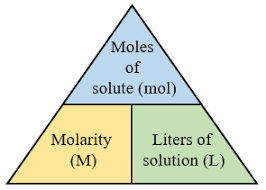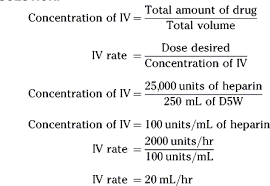|
Getting your Trinity Audio player ready... |
Pharmacy Calculations: Parenteral Solutions and Isotonicity
Introduction Parenteral Solutions and Isotonicity
Parenteral solutions and isotonicity are fundamental concepts in pharmacy practice, particularly when it comes to administering medications via injection or intravenous (IV) routes. These calculations are essential for pharmacists and healthcare professionals to ensure that the correct concentration of a medication is delivered, that it is safe for the patient, and that it does not cause adverse effects. This article delves into the key aspects of parenteral solutions, isotonicity, and provides detailed examples of calculations commonly encountered in clinical pharmacy.
Understanding how to calculate the required dosage, concentration, and volume for parenteral solutions is vital for pharmacists. These calculations are part of ensuring safe and effective medication administration. By mastering the principles of isotonicity and parenteral solutions, pharmacists can confidently handle a variety of clinical scenarios. This knowledge is not just theoretical; it is applied in real-life situations to prevent potential complications that can arise from incorrect drug administration.
Once you’ve understood these calculations, you’ll be well-equipped to handle medication dosing in critical care, emergency situations, or any case where intravenous or parenteral therapy is required. Below, we present six key examples, each focusing on a different aspect of parenteral calculations and isotonicity.
Example 1: Infusion Rate of Saline Solution
A patient needs to receive 1 liter of a 0.9% saline solution over 8 hours. Assuming that 1mL corresponds to 20 drops, how many drops per minute should be administered to the patient?
Solution:
- Convert hours to minutes:
Since the infusion will take 8 hours, we first convert this time into minutes:
8hours=8×60=480minutes
- Total number of drops in 1L:
We know that 1mL contains 20 drops, and 1L is equal to 1000mL. Therefore, the total number of drops in 1L is:
1L=1000mL×20drops/mL=20,000drops
- Calculate drops per minute:
To find the number of drops to administer per minute, divide the total number of drops by the total number of minutes:
Rounding to the nearest whole number, the patient should receive 42 drops per minute.
Example 2: IV Infusion with Drug X
Drug X has a recommended flow rate of 2-3mL/minute at a concentration of 5mg/mL. Drug X is available in 500mg vials for dilution in 5% glucose solution. The IV administration is calibrated at 20 drops per mL.
If Drug X is administered at the maximum flow rate of 3mL/min, how many drops per minute must be delivered, and how long will the infusion take?
Solution:
- Volume of glucose solution needed:
The 500mg vial must be diluted to produce 100mL of solution at a concentration of 5mg/mL. Therefore, the required volume of glucose solution is:
- Drops per minute:
Since 1mL contains 20 drops, and the flow rate is 3mL/min, the total drops per minute will be:
3mL/min×20drops/mL=60drops/min
- Time to administer the total volume:
If the total volume to be delivered is 100mL and the infusion rate is 3mL/min, the time required for the infusion is:
Example 3: Amphotericin Infusion for a 56kg Female
A 56kg female patient requires an IV infusion of amphotericin at a dose of 250 micrograms/kg. The concentration of the final solution must not exceed 100 micrograms/mL. A vial of amphotericin contains 50mg.
Solution:
- Calculate the required dose of amphotericin: The dose required is 250 micrograms per kilogram of body weight:
250μg/kg×56kg=14,000μg=14mg
- Calculate the volume of IV solution required:
If the concentration is 100 micrograms/mL, the volume needed to provide 14,000 micrograms is:
- Calculate the infusion rate:
The infusion is to be delivered over 2.5 hours, or 150 minutes. The rate is:
- Volume of solution prepared:
Since the vial contains 50mg, and we need 14mg, we will need to dilute the drug appropriately. Converting 50mg to micrograms:
50mg=50,000μg
To maintain a concentration of 100 micrograms/mL, we dissolve the vial in:
However, only 140mL is required for the infusion.
Example 4: Furosemide IV Infusion
A dose of 50mg of furosemide needs to be administered via slow IV infusion at a rate not exceeding 4mg/min. The furosemide injection contains 10mg/mL. Calculate the volume of furosemide injection needed and the infusion rate (mL/min) for the correct dose.
Solution:
- Calculate the volume of furosemide injection:
The required dose is 50mg, and the concentration is 10mg/mL, so the volume needed is:
- Determine the infusion rate:
The dose needs to be delivered at 4mg/min, so the infusion time for 50mg is:
The volume of solution to be infused is 5mL, so the infusion rate in mL/min is:
Example 5: Analgesic IV Infusion
A 100mg dose of an analgesic needs to be infused over a 5-hour period. The drug is available in 1mL vials, each containing 50mg of the drug. The only syringe driver available has a 20mL capacity, delivering at a constant rate of 2mL/hour.
Solution:
- Calculate the required number of vials:
The total dose required is 100mg, and each vial contains 50mg. Therefore, the number of vials needed is:
- Calculate the volume of diluent required:
The syringe has a 20mL capacity, and we need 100mg of drug. Since 2 vials are needed, the total volume of drug solution is 2mL (from 2 vials), so the volume of diluent required is:
20mL−2mL=18mL
Example 6: Sodium Chloride for Isotonic Nasal Drops
To make the following nasal drops isotonic, calculate the amount of sodium chloride to be added:
- Ephedrine hydrochloride: 0.5g
- Water to: 100mL
Solution:
- Freezing point depression of ephedrine:
A 1% w/v solution of ephedrine depresses the freezing point by 0.169°C. For 0.5g of ephedrine (half the concentration), the freezing point depression will be:
0.169/2=0.0845°C
- Isotonic solution freezing point:
The freezing point depression for a 0.9% saline solution is 0.52°C. Therefore, sodium chloride must provide a depression of:
0.52−0.0845=0.4355°C
- Sodium chloride required:
A 1% w/v solution of sodium chloride depresses the freezing point by 0.576°C. The required percentage of sodium chloride is:
Conclusion
Pharmacy calculations related to parenteral solutions and isotonicity are vital skills for any healthcare professional involved in medication administration. These calculations ensure the safe delivery of drugs to patients, minimizing risks and maximizing therapeutic efficacy. Understanding the theory behind these calculations and practicing different scenarios will help make these concepts second nature. Regular practice with examples such as those provided in this article is key to mastering these essential pharmacy skills.
Calculation Summary Table
| Example | Description | Required Calculation | Result |
| Example 1 | Drops per minute for saline solution infusion | 20,000 drops / 480 minutes | 42 drops/minute |
| Example 2 | Glucose solution and drops per minute for Drug X | 100mL dilution, 3mL/min rate | 60 drops/min, 33.3 minutes |
| Example 3 | Dose and volume for amphotericin infusion | 14,000 micrograms required | 140mL solution, 0.93mL/min |
| Example 4 | Furosemide dose and infusion rate | 50mg dose, 4mg/min rate | 5mL, 0.4mL/min |
| Example 5 | Analgesic infusion calculation | 100mg over 5 hours | 2 vials, 18mL diluent |
| Example 6 | Sodium chloride for isotonic solution | Freezing point depression | 0.756% sodium chloride |
By following these calculation steps and regularly practicing similar problems, pharmacists and other healthcare professionals can confidently prepare and administer parenteral solutions.
















Leave a Reply